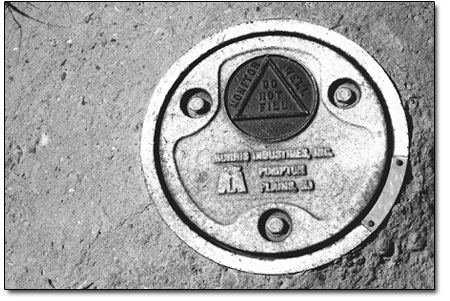| ||
| Back in the hot spot Department of Energy opens way for Southwest Colorado uranium boom SideStory: The road to White Mesa: Mill begins ore-buying program
by Will Sands Uranium is once again becoming a hot item in Southwest Colorado. A second uranium boom is taking shape in the region, courtesy of high prices for the radioactive ore along with a Department of Energy decision last week that opens 27,000 acres on the Uncompahgre Plateau to uranium mining. However, opposition to the new boom is also getting hot, as a new generation of activists question threats to human and environmental health. The Southwest’s first uranium boom arrived in the 1950s along with the beginning of the Cold War. At that time, prospectors with mining claims and Geiger counters in hand descended en masse on Colorado’s Western Slope. Many walked away with fortunes but left a legacy of mine waste and radioactive tailings in their wake. With uranium fetching as much as $138 a pound on the spot market – well up from $43/pound a year ago – prospectors and mining companies are once again eyeing the desert of the Dolores River drainage. Uranium mining got another big nudge on July 7 when the Department of Energy announced its new Uranium Leasing Program. The decision authorizes 38 mineral leases with 10-year life spans and more than triples the land available to uranium miners – 27,000 surface acres spanning San Miguel, Montrose and Mesa counties. A total of 4,800 claims have already been filed on this acreage, and the DOE is expecting activity on each of the 38 leases. “There is a lot of momentum for mining,” said Tracy Plessinger, DOE project manager. “We’ve been getting numerous calls from the industry during the past year. I would bet we get interest on every one of these lease tracts.” The DOE expects Southwest Colorado to supply 2 million pounds of uranium per year, approximately 2 percent of national production. While the decision opens 27,000 acres to mining, Plessinger countered that the numbers can be deceiving. “There will be some impacts,” she said. “Anytime you’ve got an extractive process, there will be impacts. But those impacts won’t be on the entire 27,000 acres. We estimate that there will be a total of 750 acres spread throughout the entire 27,000 that will be disturbed.” Plessinger also downplayed the impacts on human health and safety, saying the agency carefully examined the threat of radioactive exposure to mine workers and the public. “All of the risk levels came back very, very low,” she said. “The highest risk for radiation exposure was for those residing nearby and that was only 8 in 100,000. Is there an impact? Yes. Is it significant? No, not in the realm of human health risk.” Based on these facts and that many of the lease tracts in question had already been mined and reclaimed, the DOE issued a “Finding of No Significant Impact” and authorized the Uranium Leasing Project to begin immediately. However, Travis Stills, attorney with Durango’s Energy Mineral Law Center countered that a Finding of No Significant Impact is ludicrous for such a massive change in the landscape. “What we’ve got out there are a lot of problems from the last booms that still haven’t been fixed,” he said. “And now, they want to throw it wide open to industry. Of course, it’s all being pushed through. The agency needs to do this while the Bush Administration is still in power.” One of many problem areas from the last boom, Stills pointed to two former mining sites the agency has been monitoring near the Dolores River’s Slickrock river access. Unlike the agency’s predictions that contamination should decline, a recent test revealed “highest ever” concentrations of uranium and selenium. Stills added that there are dozens of other similar areas all over the Western Slope, and they are now open for new mining. “These are the same leases that the DOE simply wants to re-issue and go forward with,” he said. “Our initial view suggests that there’s an incredible number of problems with these leases, so many that the DOE would not give us the documents even after a Freedom of Information Act request. We got them only after pursuing litigation.” Plessinger maintained that the DOE will be carefully monitoring impacts during the coming uranium boom. She added that just because 4,800 mining claims have been pulled for Southwest Colorado does not mean that 4,800 new mines are going to descend on the region. “Now that the price of uranium and vanadium makes mining viable, we’ve decided to put this back out to industry,” she said. “The price is economically viable, but whether or not this goes is entirely up to industry. Historically, we’ve always seen a lot of claims, but usually only a few mines are ever created.” •
|


